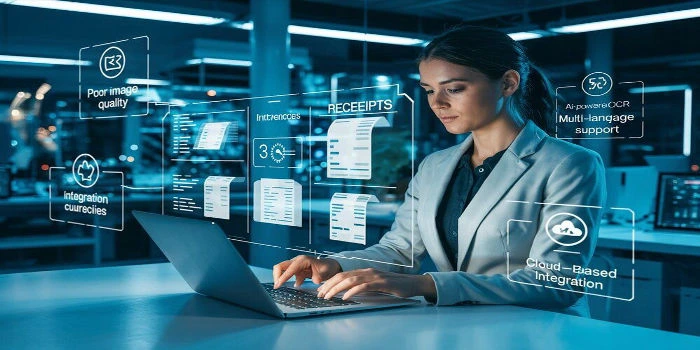Common Challenges In Receipt Automation & Their Solutions
Businesses are rapidly adopting automated receipt processing to enhance efficiency and reduce errors. This approach saves time, minimizes manual work, and ensures accurate data extraction. However, challenges like inaccuracies, integration issues, and handling diverse receipt formats persist.
In this guide, we will explore common challenges in receipt automation and their practical solutions to help businesses overcome these hurdles effectively.
Why Businesses Need Automated Receipt Processing?
Before diving into challenges, let’s understand why businesses opt for receipt automation:
- Reduces manual errors: Automated systems ensure accurate data extraction from receipts.
- Speeds up accounting workflows: eliminates the need for manual entry, saving valuable time.
- Enhances financial record-keeping: Ensures all receipts are digitally stored and easily retrievable.
- Increases compliance: Helps businesses maintain a clear audit trail for taxation and accounting.
- Seamless integration with accounting software: Many automated receipt processing tools integrate with QuickBooks, Xero, and SAP.
Common Challenges in Receipt Automation & Their Solutions
1. Handling Different Receipt Formats
Challenge: Receipts come in various formats (printed, handwritten, digital PDFs, scanned images), making it difficult for automation tools to recognize and extract data accurately.
Solution:
- Implement image enhancement techniques like contrast adjustment and noise reduction before processing receipts.
- Use AI-driven OCR models trained for low-quality image processing.
- Encourage businesses to use high-quality mobile scanning apps that enhance clarity.
2. Poor Image Quality & Scanned Receipts
Challenge: Low-quality scans, faded ink, and crumpled receipts can cause OCR tools to misinterpret text, leading to inaccurate data extraction.
Solution:
- Implement image enhancement techniques like contrast adjustment and noise reduction before processing receipts.
- Use AI-driven OCR models trained for low-quality image processing.
- Encourage businesses to use high-quality mobile scanning apps that enhance clarity.
3. Inaccurate Data Extraction
Challenge: Extracting key information like date, vendor name, total amount, and tax details from receipts is challenging, especially when OCR misreads characters or symbols.
Solution:
- Use AI-based intelligent data extraction tools that can recognize and interpret complex financial data.
- Implement machine learning models that continuously improve through pattern recognition.
- Cross-verify extracted data with predefined templates to ensure accuracy.
4. Currency and Language Variations
Challenge: Businesses dealing with international receipts face issues with different currencies, languages, and date formats, leading to incorrect financial entries.
Solution:
- Choose multi-language OCR software that can recognize and translate multiple languages.
- Integrate currency conversion APIs to standardize financial records.
- Use region-specific formatting rules to ensure consistency in date and number formats.
5. Integration Issues with Accounting Software
Challenge: Many businesses struggle with syncing receipt data with their existing accounting software, leading to inefficiencies and manual interventions.
Solution:
- Use cloud-based receipt processing tools that offer integrations with major accounting platforms.
- Choose API-friendly automation tools that allow easy customization.
6. Processing Bulk Receipts Efficiently
Challenge: Businesses handling large volumes of receipts struggle with slow processing times and system crashes.
Solution:
- Use batch-processing techniques to process multiple receipts simultaneously.
- Implement cloud-based automation for scalability and faster data handling.
- Optimize OCR models for high-speed processing.
Conclusion
Receipt automation helps businesses streamline expense tracking, improve accuracy, and reduce errors. Challenges like data extraction, varying formats, and security can arise, but AI-powered OCR, cloud tools, and secure processing address these issues.
OCR extracts key details, cloud tools ensure easy access and integration, and secure methods protect sensitive data, making the process efficient and reliable.
Frequently Asked Questions
Can OCR Extract Text From Handwritten Receipts?
Yes, AI-powered OCR can recognize handwritten text, but accuracy depends on the clarity of handwriting.
How Can I Improve The Accuracy Of Automated Receipt Processing?
Use high-quality scans, AI-driven OCR, and machine learning models for better accuracy.
Is Receipt Automation Safe For Financial Data?
Yes, as long as you use GDPR-compliant, encrypted platforms with strong security measures.
Can Automated Receipt Processing Handle Bulk Receipts?
Yes, cloud-based and batch-processing tools can efficiently process large volumes of receipts.
